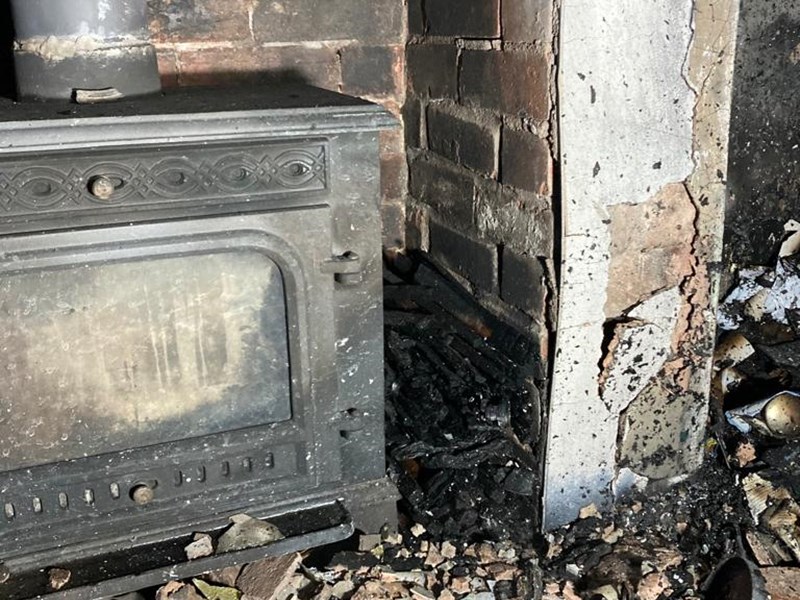Crews issue advice following accidental log fire

Staffordshire Fire and Rescue Service is reminding residents around the dangers of log burners following a recent accidental log fire incident in Tamworth.
Firefighters were called to an address off Nevill Street, Tamworth, at 3pm on Thursday (3 November) following reports of a house fire.
Crews from Burton and Lichfield attended as did crews from Warwickshire Fire and Rescue Service.
On arrival, crews found a fire in the lounge of the property.
Four breathing apparatus and two hose reel jets were used to extinguish the fire.
Thankfully, no one was injured.
The cause of the fire was deemed to be accidental as a result of a large amount of wood being placed either side of the log burner and the burner being left on whilst occupiers were out of the property.
Crews left the scene just before 6.40pm on Thursday (3 November).
Sarah Smith, Station Manager at Staffordshire Fire and Rescue Service, said: “Please ensure combustibles remain stored safely including kindling and seasoned logs. Please avoid storing these directly next to your burner and open fires due to the radiated heat increasing the likelihood of them catching fire.
“Thankfully, in this incident no one was injured.”
Here are our top tips for minimising the risk of a chimney fire:
We strongly recommend that the chimney is cleaned regularly and in line with the below guidelines.
- Wood - Quarterly when in use
- Smokeless fuels - at least once a year
- Bituminous Coal - at least twice a year
- Oil - at least twice a year
- Gas - at least twice a year
- Biomass - at least once a year
- The best times to have your chimney swept are just before the start of the heating season and after any prolonged period of shut-down.
- Always leave matches and lighters out of reach of children- consider buying child resistant lighters and match boxes to reduce the risk.
- Remember a blocked or defective chimney can cause carbon monoxide poisoning from gas or solid wood fires.
- Always ensure good quality fuel is used- more information about how to buy the correct fuel can be found on the HETAS website.
- Always use a fire guard to protect against flying sparks from hot embers. Make sure you store all fuel away from an open fire or stove. Never use petrol or paraffin to light your fire.
- Carbon monoxide alarms should be installed. All alarms should be regularly tested.
- Heat monitors/alarms for wood burners/flue temperatures are recommended as early warning systems. The aim is to burn at the correct temperature and reduce risks associated with hot gases or tars, so being aware and vigilant is important.
On the importance of having a smoke alarm, Sarah added: “Buying a smoke alarm could help save your home and the lives of you and your family.
“The number of smoke alarms to fit in your home depends on your particular circumstances. Fires can start anywhere, so the more that are fitted, the higher the level of protection.
“For maximum protection, an alarm should be fitted in every room (except bathrooms as steam may trigger the alarm). You should choose the type most suited to the risk in each room.
“If your home is on one floor, one smoke alarm, preferably of the optical type, may be enough to provide you with early warning of a fire.
“If your home has more than one floor, at least one alarm should be fitted on each level. In this case a combination of optical and ionisation alarms, preferably interconnected, will give the best protection.”
Published:
